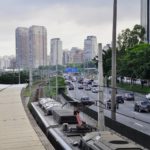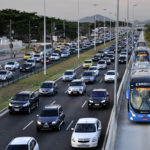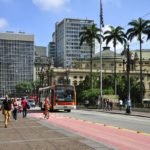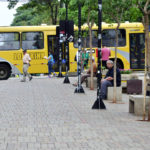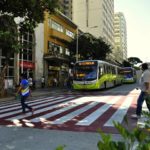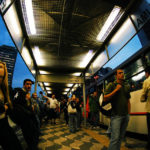Recent Posts by Toni
COVID-19 is a radical moment in so many ways. By disrupting urban systems so profoundly, it has thrust the question of urban futures before us in a way that we cannot ignore. Will cities recover? What will they look like? ...

As the year comes to an end, Urban Stories explores the emerging trends, key decisions and major changes on the horizon for cities around the world in 2017. With a new installment each day from India, Brazil and Washington, D.C., our ...

The Summer Olympics in Rio de Janeiro, the first South American city to host the modern games, famously faced challenges in the run-up to the event – from construction delays to a polluted venue to worries about the Zika virus ...

About 80 percent of all wealth generated in the world comes from the cities, which attract millions of people every year in search of opportunities. There are already 3.9 billion people living in urban areas and, in 2050, that number ...

Over the past few years, demand for buses has been declining in major Brazilian cities. How should city and transport leaders respond to this alarming trend? One possible solution is to improve the quality and productivity of bus service. To achieve this, smart ...

The city is like an organism, and the swift movement of people and goods is the oxygen that sustains its well-being. When this circulation is inhibited, it significantly compromises the quality of urban life. For example, private cars account for ...

Congestion, high levels of air pollution, and traffic crashes are consequences of a culture of investment that has focused for decades on the automobile. These externalities can cost up to 10 percent of a country’s GDP, and the world’s vehicle fleet is ...

For those who live in or visit Brazil’s cities, it is not hard to see the effects of increasing motorization and car usage on our urban centers. Too many cities have become crippled by bottlenecks and stifling traffic congestion. Increased ...

A message from Luis Antonio Lindau, director of EMBARQ Brasil (the producer of TheCityFix Brasil.) Read this post in Portuguese here. Leaders from the world’s biggest cities convened in Sao Paulo earlier this month to find solutions to climate change ...

 Phil
Great article! A lot of what I have read here, has already been implemented in cities in the Netherlands, with Denmark the two bicycle countries par...
Phil
Great article! A lot of what I have read here, has already been implemented in cities in the Netherlands, with Denmark the two bicycle countries par...
 Bobby Salvin
I understand why some people wish mobility and GDP weren't connected, but it's wishful thinking. During the pandemic, for instance, when the economy...
Bobby Salvin
I understand why some people wish mobility and GDP weren't connected, but it's wishful thinking. During the pandemic, for instance, when the economy...
 Peace
Let me understand your Position -
We need to make our streets and public spaces dangerous and inhospitable so the disabled and infirm are forced to...
Peace
Let me understand your Position -
We need to make our streets and public spaces dangerous and inhospitable so the disabled and infirm are forced to...






